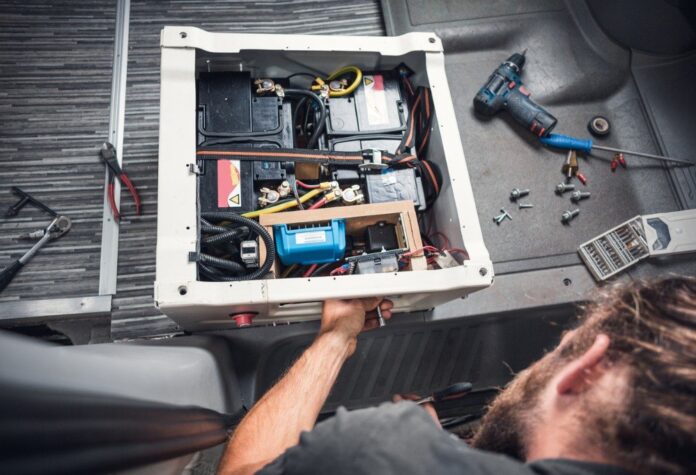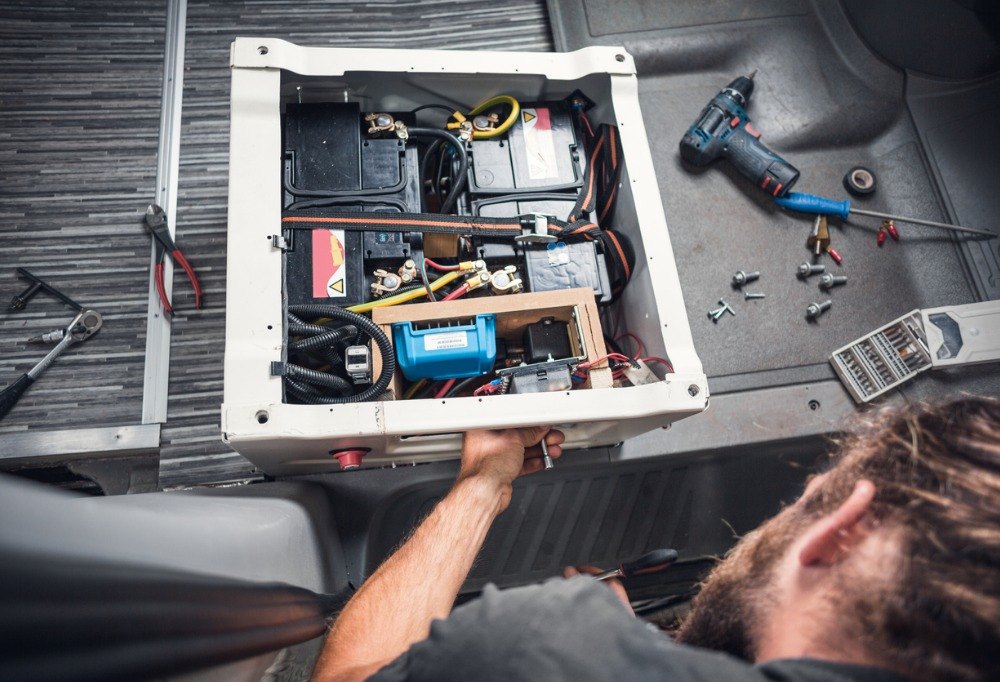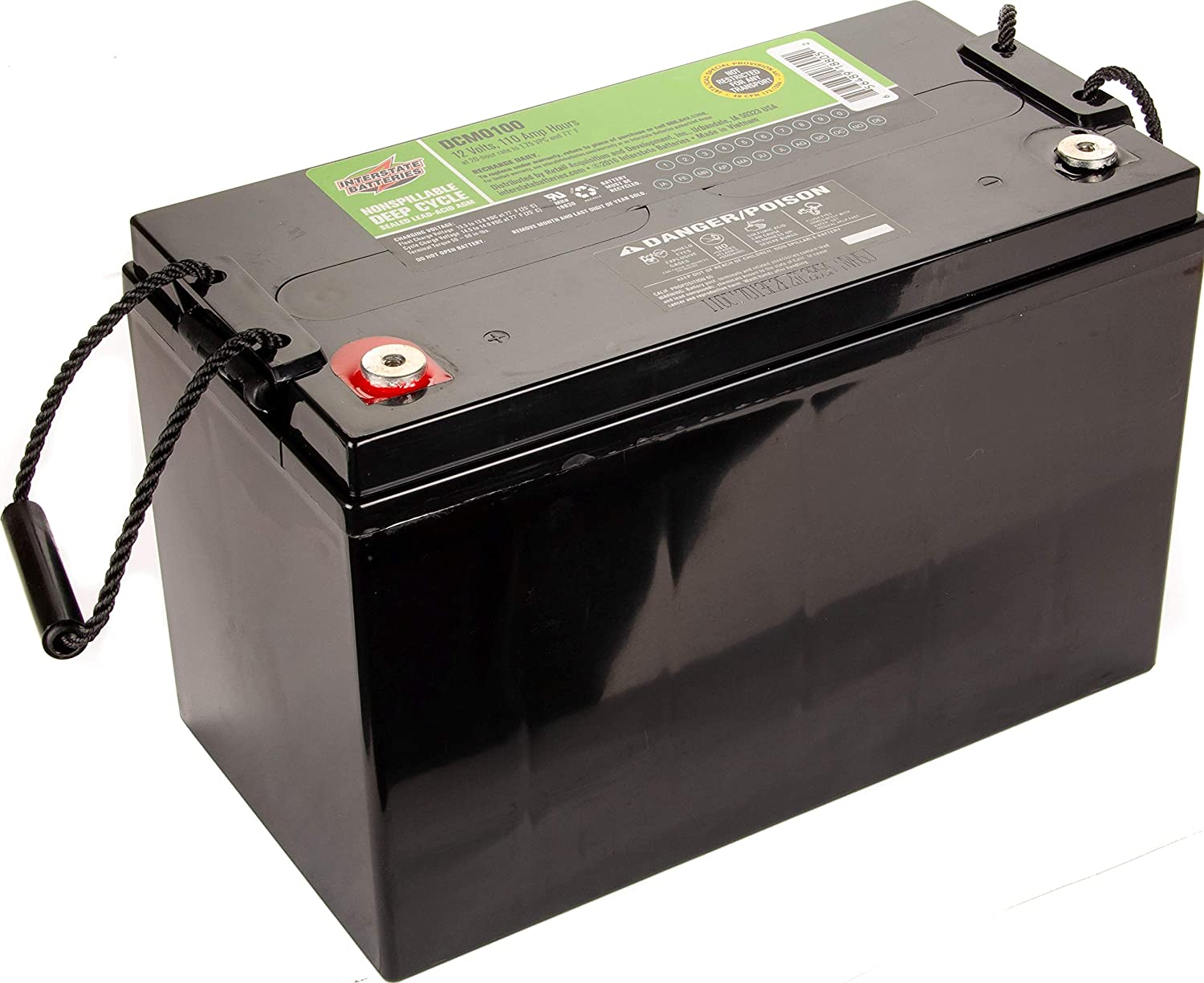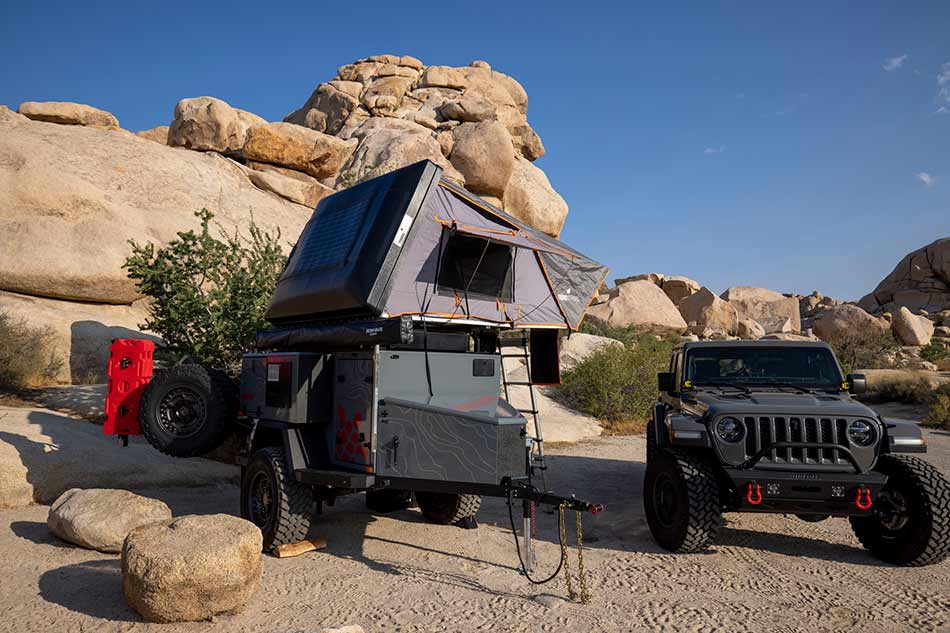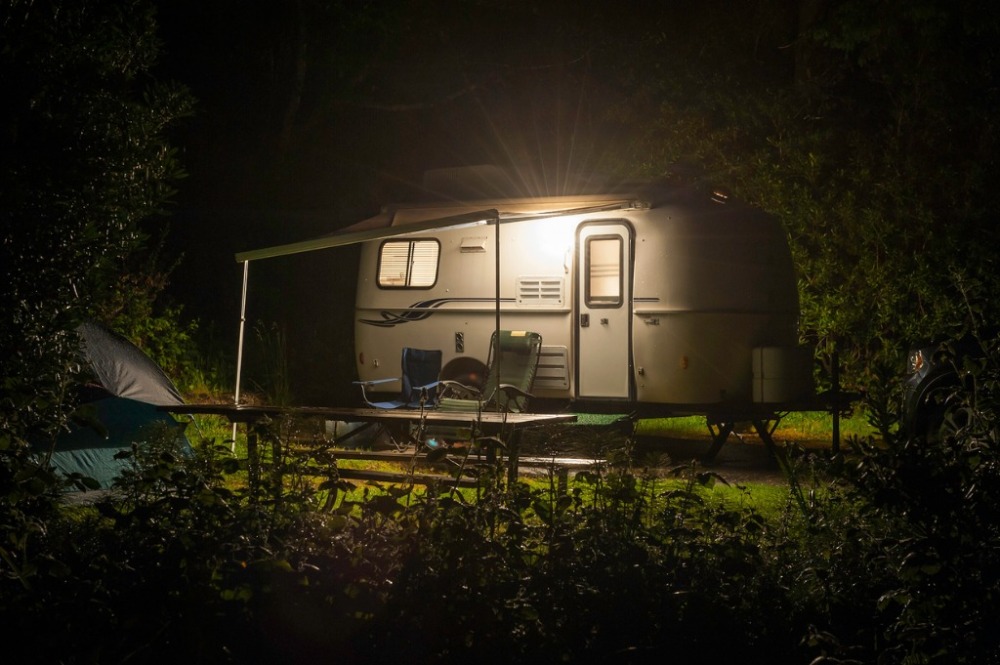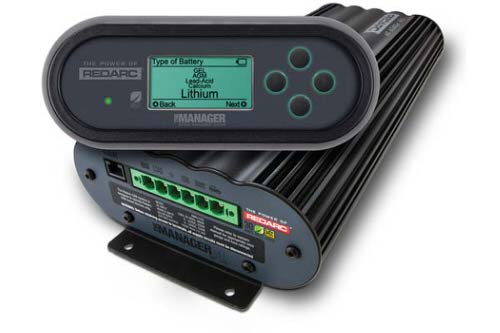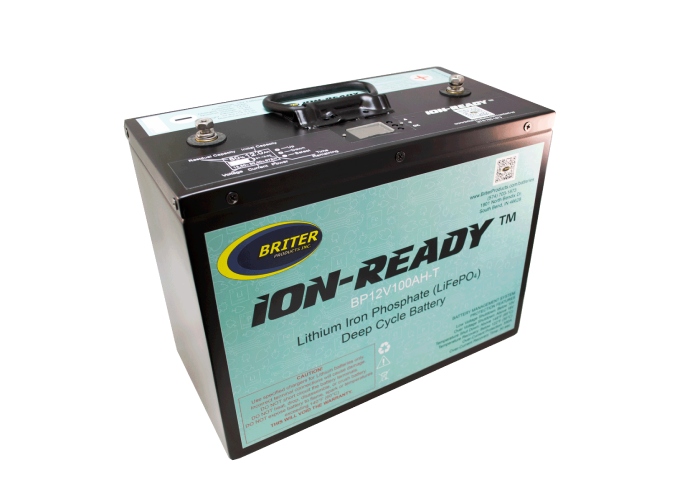Photo by photoschmidt via iStock
If you’re like me, your overlanding rig has all sorts of accessories that can easily drain the vehicle’s battery.
From radios to cameras, your cell phone to a light bar, there is no shortage of draw on your vehicle’s battery.
To avoid a dead battery, it’s imperative that you learn how to set up an overlanding battery management system.
First things first, though – let’s talk about the components of your mobile power system.
Overlanding Battery Management System: It All Starts With Your Batteries
By and large, most overlanders look to one of three types of batteries for their overlanding setup: Lithium-ion, AGM, and lead acid. Let’s compare and contrast each.
Lithium-Ion Batteries
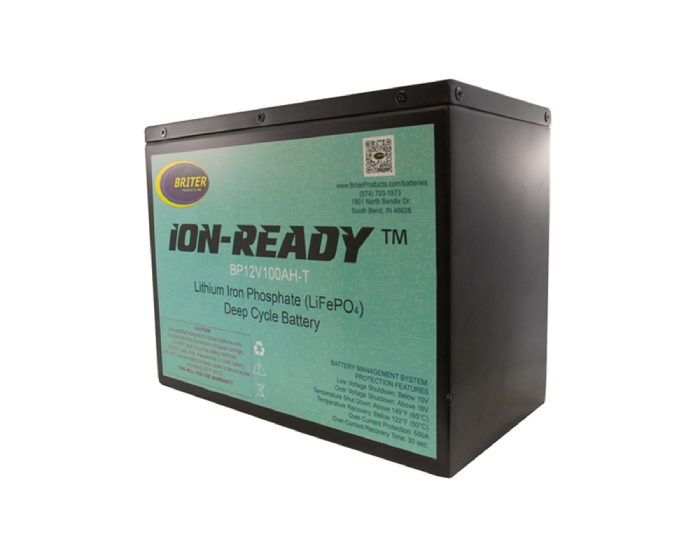
So, where AGM and lead acid batteries can only be discharged to about 50 percent, lithium batteries can be discharged to up to 90 percent. Not only that, if you wanted to, you could drain a lithium battery to nothing overnight and fully recharge it during your drive the next day (lithium batteries will fully recharge in just a couple of hours, really).
I’ve got the Briter Products lithium batteries shown above ready to install in my trailer. These batteries are fully serviceable and have a 5,000-cycle lifespan, so they will give me the power I need for years and years to come.
And while lithium batteries are more expensive up front, since they have a much longer lifespan, the difference in price over the long term is negligible.
AGM Batteries for Your Overlanding Battery Management System
AGM stands for Absorbed Glass Mat. These batteries, like the one shown above, are the standard batteries that overlanding enthusiasts have used for years. They are relatively inexpensive, work in below-freezing temperatures, and stand up to the vibrations, shocks, and jostles of overlanding and off-road driving. On the downside, AGM batteries are quite large and quite heavy, too. And as noted above, their depth of discharge is only about 50 percent.
Lithium battery technology has come a long way in recent years, and as a result, more and more outdoor enthusiasts are pulling their AGM batteries in favor of lithium.
My Turtleback Expedition Trailer, for example, came with AGM batteries when I got the trailer in 2020. As noted earlier, I’ve decided to swap out the AGMs with the Briter Products lithium batteries I described above. I wanted a smaller and lighter battery, something with a greater lifespan, and since the Briter Products lithium battery has a similar operating temperature range as many AGM batteries, there is no concern of using them in the colder months. Making the switch was really a no-brainer.
Lead Acid Batteries
Photo by hauged via iStock
Of course, lead acid batteries are the old standard for vehicles. The chances are great that your truck has a lead acid battery unless you’ve swapped it for something else.
There are plenty of advantages of lead acid batteries:
- They’re cheap.
- They’re powerful.
- They’re easy to use.
- They’re easy to recharge.
- They have a high power output.
Of course, they also have plenty of negatives:
- Power density is very low.
- The low power density means the batteries have to be quite large and heavy.
- Poor depth of discharge.
So, to recap, while lithium-ion, AGM, and lead acid batteries all have their pros and cons, for me, the winner here is lithium. In terms of how to set up an overlanding battery management system, they simply offer much better performance and long-term reliability than the other two.
Learn More:
- AGM vs Lithium: Choosing the Best Battery for Your Overland Rig
- 5 Products You Need for a Smart Solar Setup
How to Use Your Batteries
Whatever type of batteries you decide to use, you will need to consider how you will use them to power your rig.
In my case, I have solar panels on top of my Torro Offroad Skylux Rooftop Tent that give my system plenty of power. The advantage of having the panels is that I can charge the system indefinitely so long as I have good sun, which I tend to have here in Southern California.
Many overlanders have a solar panel setup like this that they don’t have to deploy separate from their vehicle. This is hugely convenient because there’s no added work for me to set up and take down camp – I deploy the tent (shown above) and collapse it as normal and hit the road without having to pack up my solar panels.
If you don’t go solar, another option is to use large batteries that can be charged by your alternator. This is a good option if you’re on the road a lot, which gives the alternator a chance to charge the batteries.
Of course, if you stop frequently or for a couple of days at a time, you’ll need to have a solar power system to recharge the batteries. You can also add more batteries to the mix to give you more power, but at some point, the sheer number and weight of the batteries likely wouldn’t make this type of setup worth it.
Photo by fotoVoyager via iStock
A third option is to install a dual-battery system.
This type of setup separates your vehicle battery from the auxiliary battery so they are responsible for different things. Your vehicle’s battery does its normal things – starts the vehicle, runs your winch, powers the lights, and so forth. All the other stuff – the lights in your trailer and the water pump, for example – is handled by the auxiliary battery.
Dual-battery systems usually require that both batteries be the same type. So, if your vehicle has a lead acid battery, the auxiliary battery would also need to be lead acid. Unless, of course, you have a battery manager…
How to Set Up an Overlanding Battery Management System
A final component you need for your overlanding battery setup is a battery management system.
These systems take power from your vehicle’s battery and solar panels in order to charge the auxiliary battery. This allows you to maintain the auxiliary battery at an optimal level while also giving you insights into what the power situation is between the alternator and batteries.
In just a couple of weeks, I’ll be installing a REDARC Manager30 battery management system to take my overlanding setup to the next level.
What’s so great about this system is that it manages all aspects of my rig’s power for me. It shows me how much power I’m using, where that power is going, and how much power is coming from the alternator. See how to set up this system in the video below:
You can also use this system with different types of batteries, so no matter if you’re running lithium, AGM, lead acid, or a combination thereof, you’ll have the advantage of a well-maintained and managed power system.
It’s important that your battery management system be able to stand up to the rigors of overlanding and off-roading. And in the case of my system components, I don’t have to worry at all about their reliability.
The REDARC Manager30, for example, was developed and tested in the harsh environments of Australia. This thing can stand up to dust, heat, cold, snow, rain, and just about any other conditions you can throw at it.
Likewise, the Briter Products lithium batteries I have installed are steel-cased for improved durability and come with a full five-year warranty (not pro-rated as you often find). I can ride the roughest trails, spend chilly nights in the mountains, and camp in the desert, and not have to worry about how my Briter Products batteries will perform.
The lesson here is that learning how to set up an overlanding battery management system is more than just discovering what components you need. Instead, you also need to invest in quality components if you want to have a reliable power system for your overlanding adventures.
Ultimately, what you choose to purchase for your overlanding power system is up to you. But for me, I feel like I have the best components to build a truly reliable power system for my overlanding rig.



